
Overview
This article delineates five pivotal practices that can elevate direct-to-consumer (DTC) brands into profitable ventures.
- Defining target audiences is crucial for fostering better engagement; understanding who your customers are allows for tailored messaging that resonates.
- Crafting compelling headlines captures attention and draws readers in, making it essential for initial engagement.
- Structuring content for readability ensures that your message is communicated clearly and effectively, allowing for a smooth reading experience.
- Incorporating engaging visuals not only enhances aesthetic appeal but also aids in retaining audience interest.
- Utilizing strategic keyword placement for SEO is indispensable for enhancing visibility in search engines, ultimately driving customer conversion rates and profitability.
By implementing these practices, DTC brands can significantly improve their market presence and financial success.
Introduction
Navigating the competitive landscape of direct-to-consumer (DTC) brands necessitates more than just an exceptional product; it demands strategic practices that effectively convert potential customers into loyal advocates. By meticulously honing in on the right audience, crafting compelling headlines, and optimizing content for engagement, brands can fundamentally transform their approach and significantly enhance profitability. However, amidst the plethora of strategies available, what truly distinguishes the DTC brands that thrive from those that falter? This article explores five essential practices that empower DTC companies to not only capture attention but also drive sustainable growth in an ever-evolving market.
Define Your Target Audience for Maximum Engagement
To successfully convert visitors into customers, companies must first identify their target audience through effective segmentation. This process involves categorizing the audience based on:
- Demographics
- Psychographics
- Purchasing behavior
Utilizing tools such as customer surveys and analytics provides valuable insights into existing customers. For instance, a DTC company may discover that its core customers are millennials who prioritize sustainable products. By tailoring marketing efforts to this specific segment, brands can craft personalized messaging that resonates with their interests and addresses their pain points. This focused strategy not only enhances engagement but also significantly increases transaction rates, ultimately driving profitability.
With the average cart abandonment rate hovering around 69%, understanding and effectively segmenting the audience is crucial for converting customers. As Paul Malone aptly states, "Begin marketing initiatives with an emphasis on the customer, not the item." Brands like Birchbox exemplify this principle by personalizing the customer journey, which has proven effective in boosting engagement and satisfaction. Parah Group's holistic approach ensures that all aspects of a client's website and marketing strategy are aligned to drive significant growth.
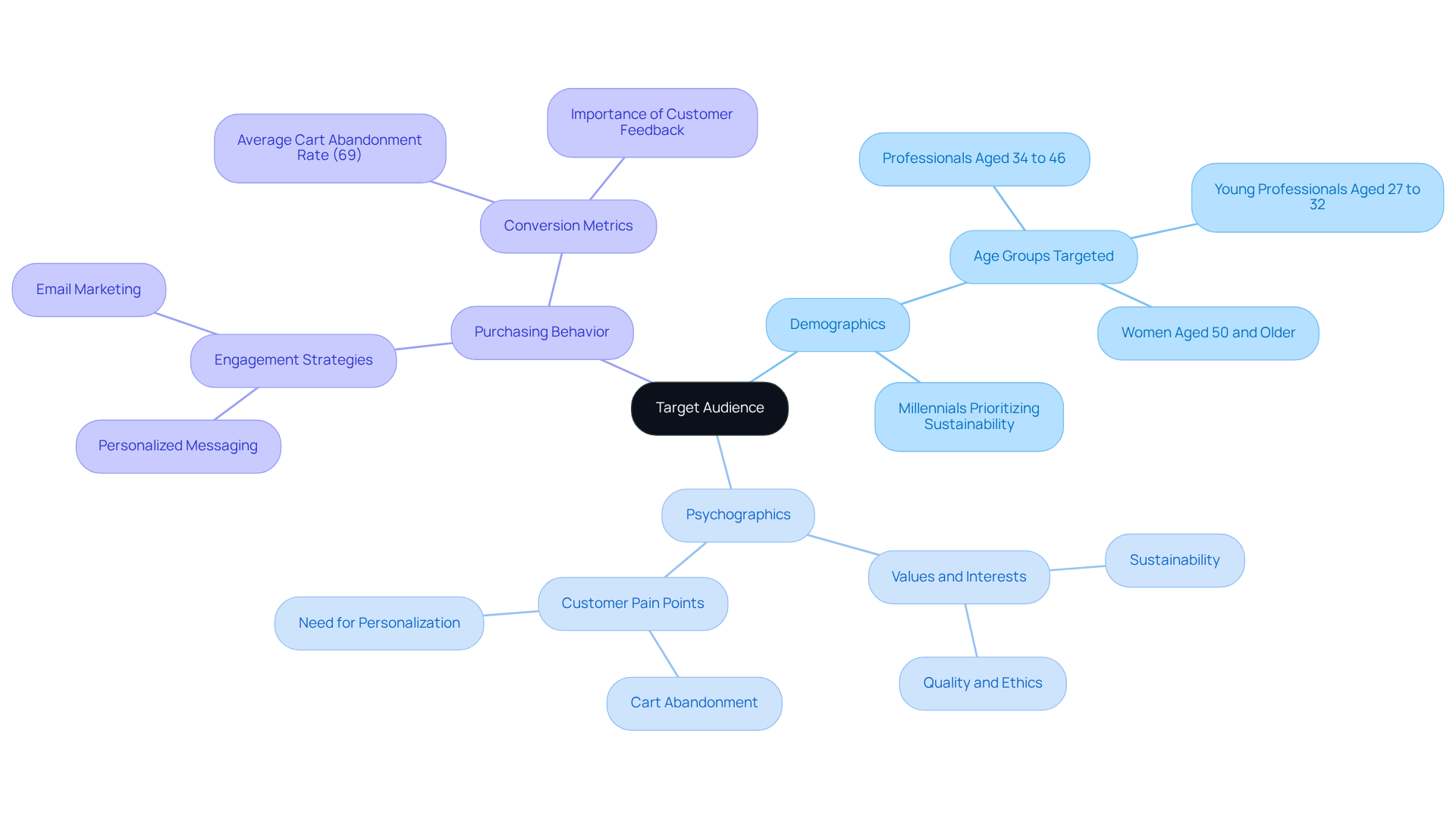
Craft Compelling Headlines That Capture Attention
Creating engaging titles is essential for distinguishing oneself in a crowded market. By utilizing action-oriented language and clearly articulating the benefits of your product, you can significantly enhance engagement. For instance, instead of an unclear title like 'Our Shoes Are Comfortable,' consider a more compelling option: 'Experience All-Day Comfort with Our Ergonomic Shoes.' This approach not only captures attention but also effectively communicates the value proposition.
A/B testing different titles can yield significant insights into what resonates most with your audience, ultimately resulting in enhanced click-through rates and outcomes. Research indicates that 80% of readers do not proceed past the title, and websites with clear titles experience a 25% increase in converting visitors, underscoring the importance of accuracy in title creation.
As Michael Brenner aptly noted, 'Content builds relationships. Relationships are built on trust. Trust drives revenue.' This principle is particularly pertinent for direct-to-consumer companies, where impactful titles can bridge consumer interest and action. Additionally, Peter F. Drucker remarked, 'The goal of marketing is to know and comprehend the customer so thoroughly that the offering suits him and promotes itself,' emphasizing the significance of understanding your audience when crafting titles.
Notably, number headlines resonate 15% more than reader-addressing headlines, providing actionable guidance for DTC brands aiming to refine their headline strategies.
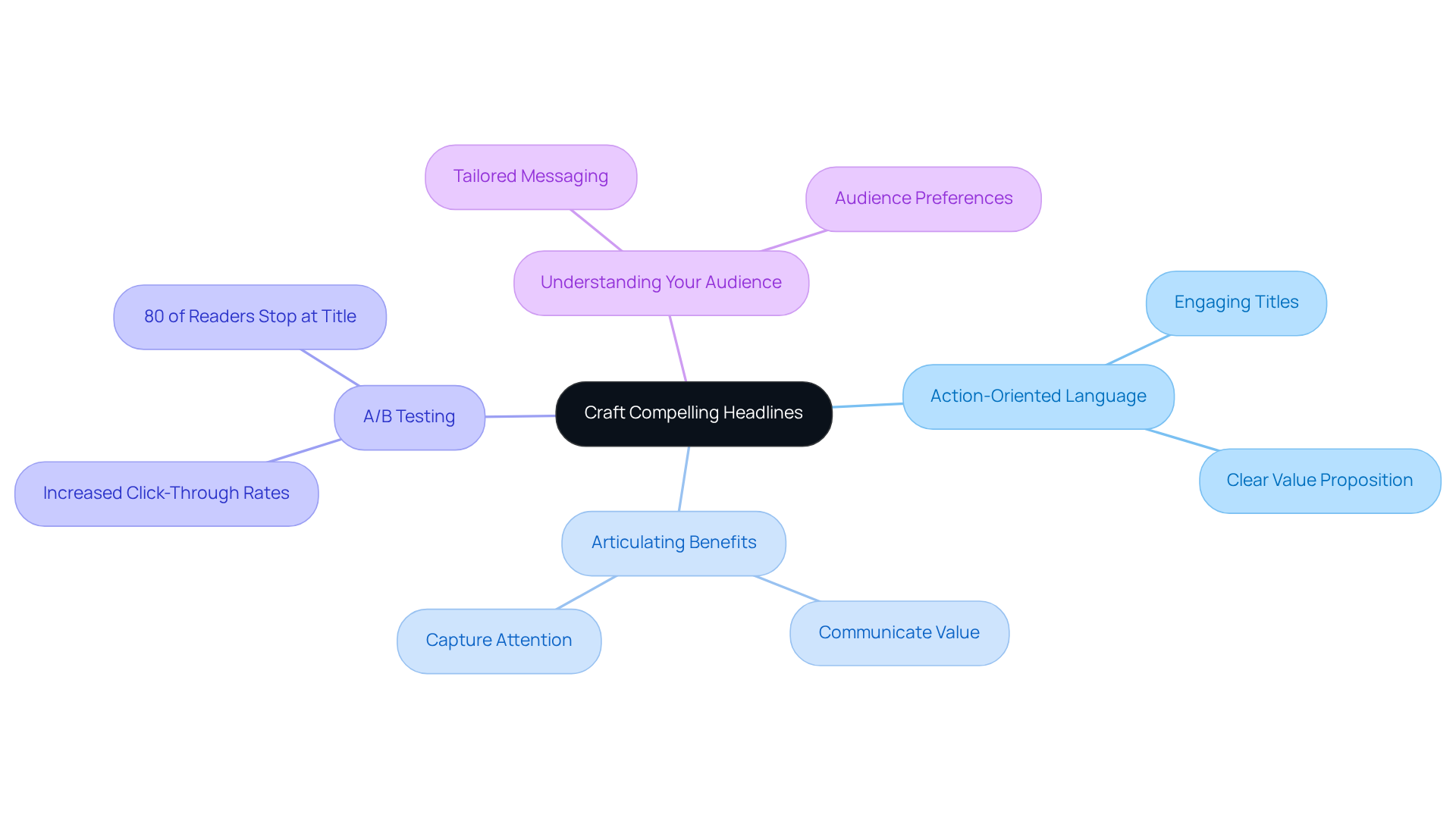
Structure Your Posts for Readability and Skimmability
To maximize engagement, structuring your content for optimal readability and skimmability is essential. Effective content strategy, as Kristina Halvorson emphasizes, revolves around delivering useful, usable content, which includes facilitating easy navigation for readers.
- Employ short paragraphs
- Use bullet points
- Incorporate subheadings to segment text
This allows readers to digest information quickly. For instance, a blog post detailing product benefits can be organized with distinct subheadings for each advantage, enabling readers to skim and locate relevant information effortlessly.
Incorporating ample white space and selecting a legible font significantly enhances the reading experience, encouraging visitors to linger longer and explore further. This approach not only boosts user engagement but also markedly increases success rates; Parah Group has recorded measurable advancements, including a 36% rise in ROI on ads for clients converting to these strategies.
However, it is crucial to avoid common pitfalls, such as overcrowding your content with excessive information or employing overly complex language, which can undermine skimmability. By focusing on these optimal strategies, DTC brands can create content that not only attracts but also retains customers, ultimately leading to enhanced success rates.
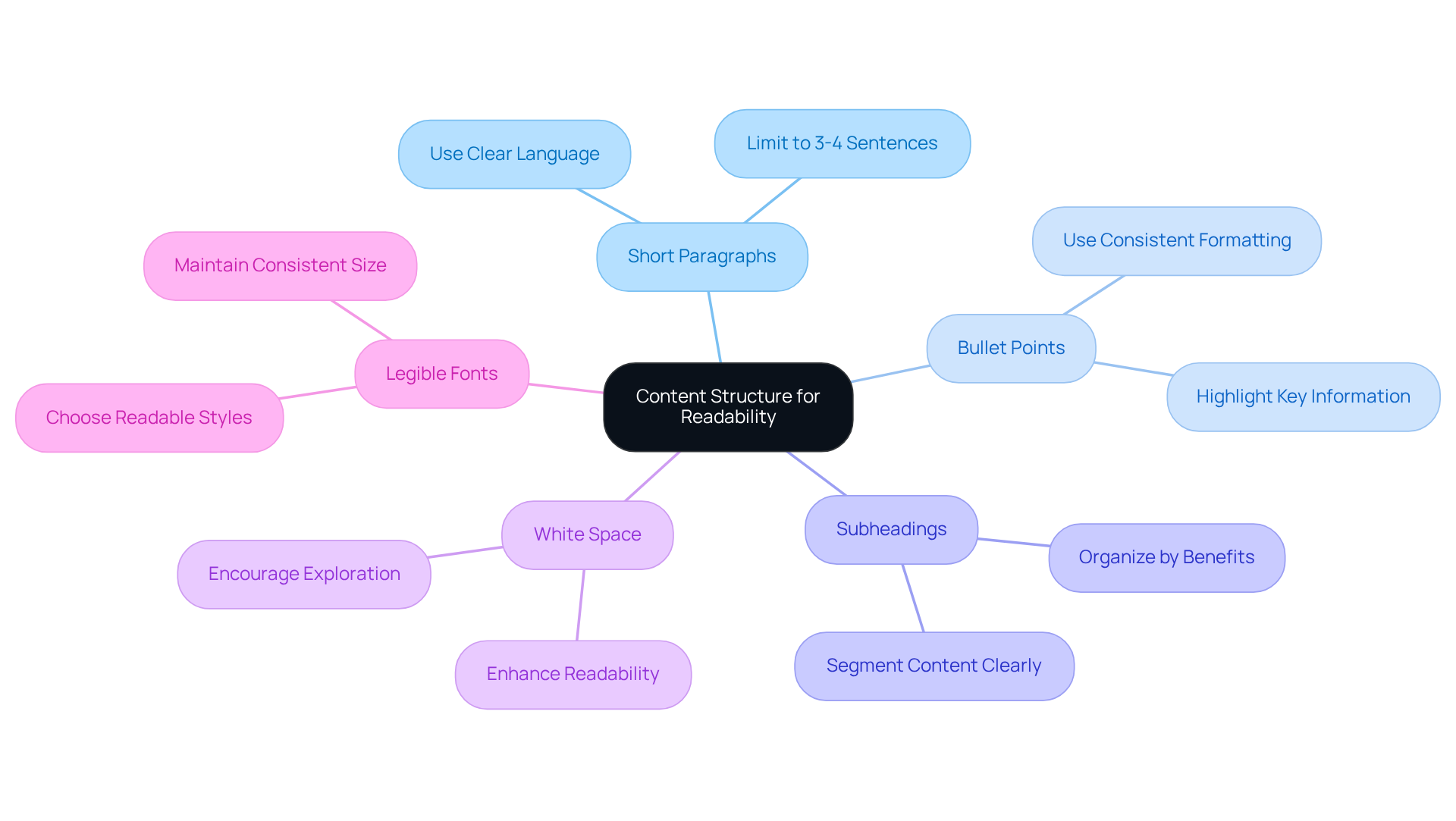
Incorporate Engaging Visuals to Enhance User Experience
Incorporating engaging visuals is essential for enhancing user experience and converting visitors into customers. High-quality images, infographics, and videos serve to effectively demonstrate the advantages and characteristics of your offering. For instance, a direct-to-consumer (DTC) company offering kitchen gadgets might feature a video illustrating the item in action, showcasing its ease of use and functionality. Such engaging visuals not only capture attention but also convey complex information swiftly, making it easier for potential customers to grasp the value of your offerings.
Furthermore, optimizing these visuals for quick loading times is critical to avoid user frustration; research indicates that even a one-second delay in page load time can lead to a 7% decrease in sales. Current trends reveal that video content, particularly for product demonstrations, is increasingly popular, with 84% of consumers reporting that they have been persuaded to purchase a product after viewing a company's video.
As Dr. Ralf Speth aptly observes, effective design positively influences a company's financial performance, underscoring the importance of high-quality visuals in boosting sales. However, companies must avoid common pitfalls, such as overloading pages with excessive visuals, which can hinder loading times and detract from user experience. By prioritizing high-quality visuals and ensuring they are optimized for performance, DTC companies can significantly enhance their conversion rates through converting users into engaged customers.
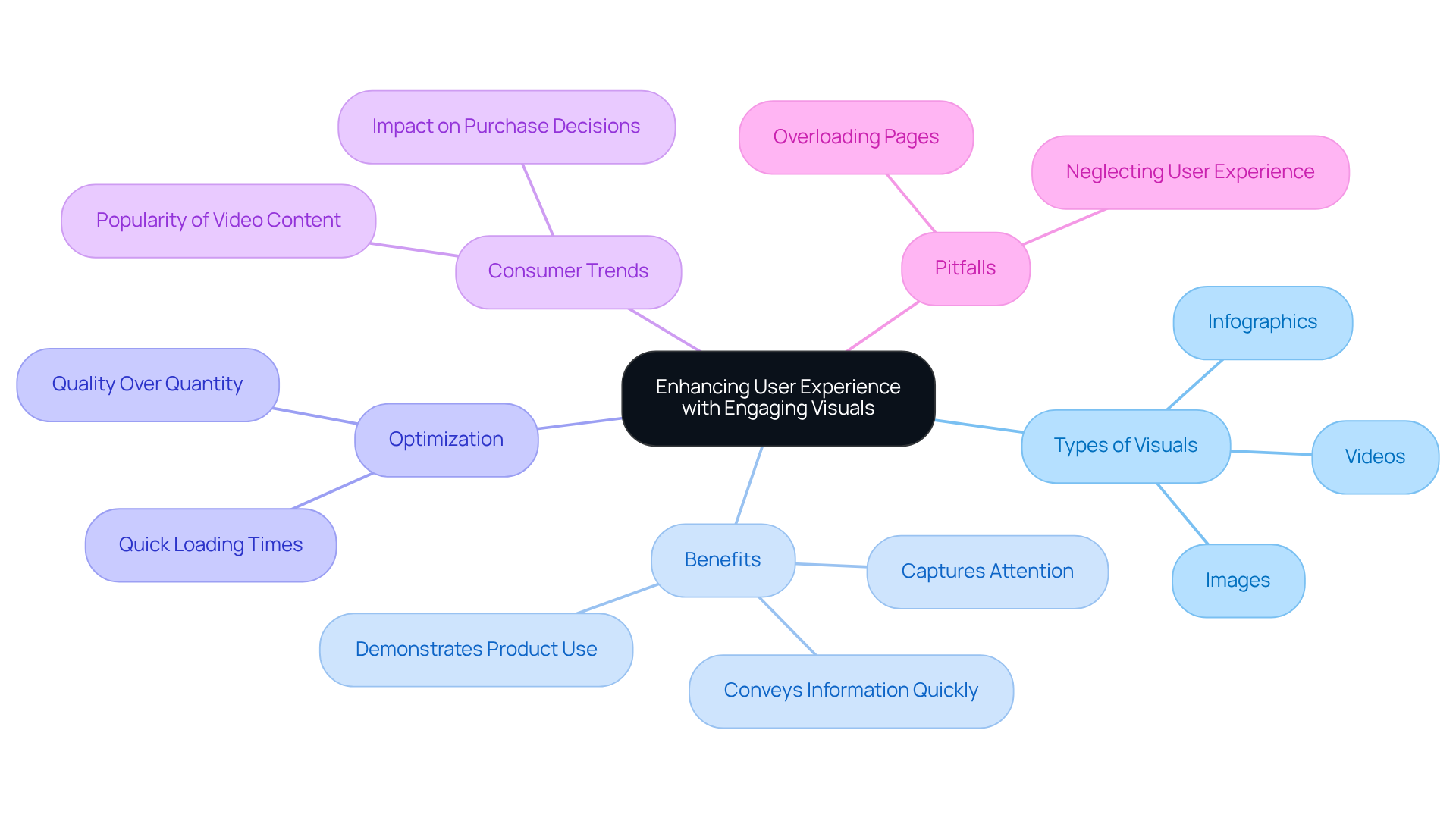
Utilize Strategic Keyword Placement for SEO Benefits
Utilizing strategic keyword placement is paramount for enhancing SEO and driving organic traffic to your site. Begin with thorough keyword research to pinpoint the terms your target audience is actively searching for. Naturally incorporate these keywords into your content—this includes headlines, subheadings, and body text. For example, if your DTC brand specializes in eco-friendly products, seamlessly integrate keywords like 'sustainable home goods' throughout your website. Furthermore, consider the power of long-tail keywords that reflect specific user queries; they often present lower competition and higher conversion potential. Regularly converting your content by including relevant keywords not only improves search rankings but also attracts more qualified leads.
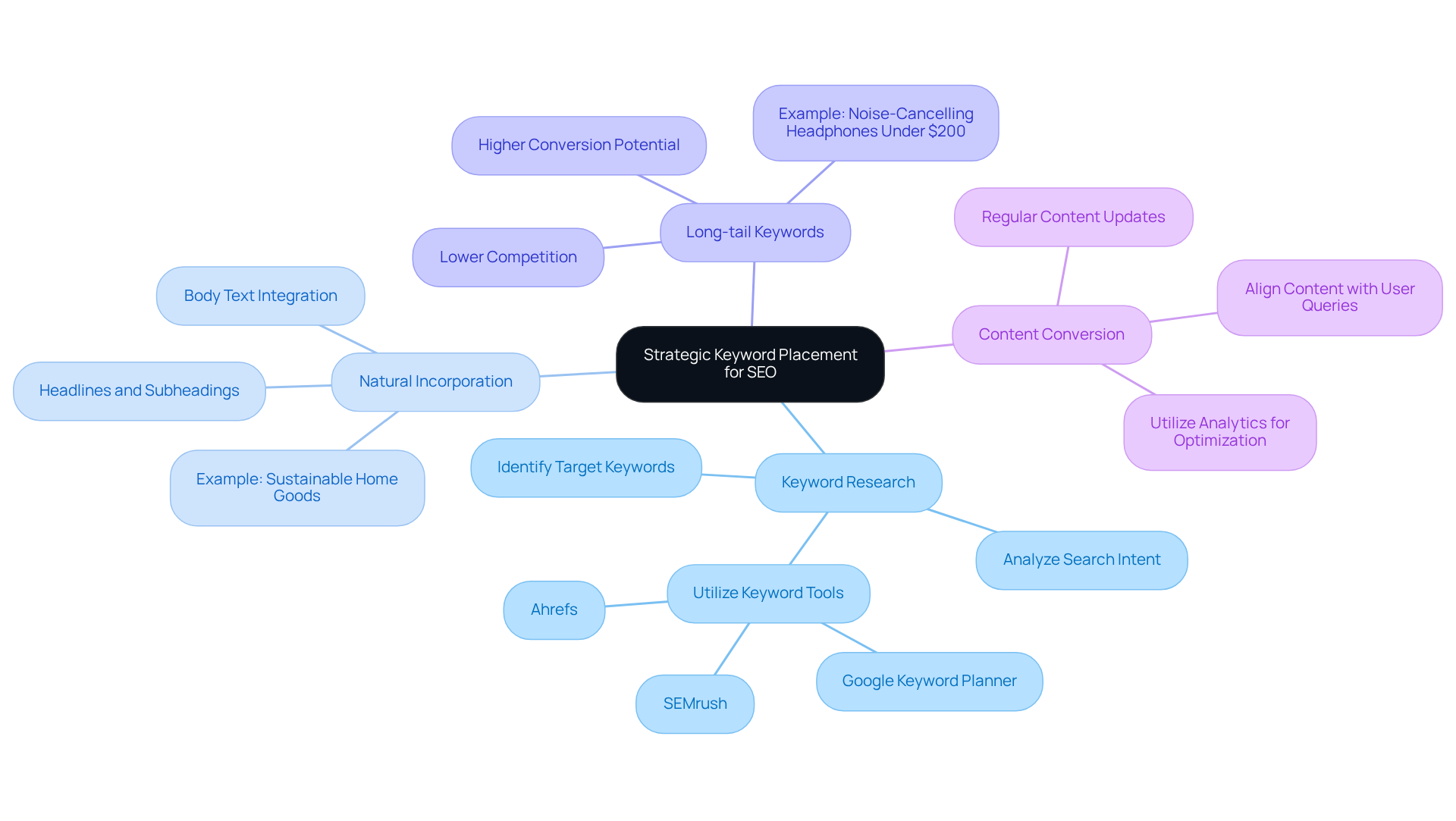
Conclusion
Transforming direct-to-consumer (DTC) brands into profitable enterprises hinges on the understanding and implementation of effective strategies. By concentrating on essential practices—such as:
- Identifying target audiences
- Crafting compelling headlines
- Structuring content for readability
- Incorporating engaging visuals
- Utilizing strategic keyword placement
brands can significantly enhance their engagement and conversion rates. These practices not only cultivate a deeper connection with customers but also drive sustainable growth in a competitive market.
The significance of audience segmentation cannot be overstated; it empowers DTC brands to tailor their marketing efforts and messaging to resonate with specific consumer groups. Moreover, creating attention-grabbing headlines and structuring content for easy navigation can lead to improved user experiences. Engaging visuals, coupled with optimized keyword strategies, further amplify the potential for attracting and retaining customers, ultimately culminating in increased profitability.
In conclusion, the journey to becoming a profit powerhouse in the DTC landscape demands a multifaceted approach. Brands must prioritize understanding their audience and crafting experiences that resonate with them. By embracing these best practices, DTC companies can not only boost their conversion rates but also establish lasting relationships with their customers, paving the way for long-term success.
Frequently Asked Questions
Why is it important to define a target audience?
Defining a target audience is crucial for converting visitors into customers. It allows companies to segment their audience based on demographics, psychographics, and purchasing behavior, leading to tailored marketing efforts that resonate with specific customer interests and pain points.
What tools can help in identifying a target audience?
Tools such as customer surveys and analytics provide valuable insights into existing customers, helping companies understand their core audience and effectively segment them for targeted marketing.
How does audience segmentation impact engagement and profitability?
By understanding and segmenting the audience, brands can craft personalized messaging that enhances engagement and significantly increases transaction rates, ultimately driving profitability.
What is the average cart abandonment rate, and why is it relevant?
The average cart abandonment rate is around 69%. Understanding audience segmentation is crucial because it helps convert potential customers who may otherwise abandon their carts.
What is the significance of crafting compelling headlines?
Compelling headlines are essential for capturing attention in a crowded market. They help clearly articulate the benefits of a product, enhancing engagement and increasing click-through rates.
How can A/B testing improve headline effectiveness?
A/B testing different titles can yield insights into what resonates most with the audience, leading to enhanced click-through rates and better outcomes for marketing efforts.
What impact do clear titles have on visitor conversion rates?
Research indicates that websites with clear titles experience a 25% increase in converting visitors, highlighting the importance of accuracy in title creation.
What type of headlines resonate better with audiences?
Number headlines resonate 15% more than reader-addressing headlines, offering actionable guidance for brands looking to refine their headline strategies.
How do impactful titles contribute to building trust and revenue?
Impactful titles can bridge consumer interest and action, fostering relationships built on trust, which ultimately drives revenue, especially in direct-to-consumer companies.
FAQs











